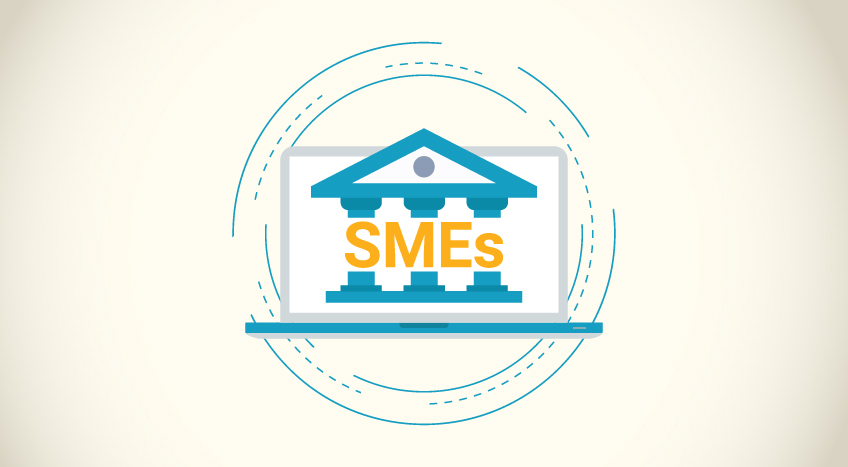- What Is Interest Expense?
- How Do Interest Expenses Work
- What Is Interest Expense in Accounting?
- How Do You Find Interest Expense in Accounting?
- How Is Interest Expense Calculated?
- Example of Interest Expense
- Is Interest Expense Debit or Credit?
- Easy Calculation Of Interest Expense And Interest Payable
Companies borrow money from banks and other financial institutions for various purposes such as the payment of bills, purchase of inventory, property, or equipment purchases. The cost of these loans and borrowings is the interest that the company has to pay periodically. Companies may also have to pay interest on delayed payments to their vendors (credit line). It is very important to watch the interest amounts that the business is paying as changes in these rates can make a big difference to the profitability of the business.
What Is Interest Expense?
Interest expense is defined as the interest amount that a company pays as interest on loans that have been taken from banks and financial institutions. This interest expense is something that is incurred (accrued) daily but is usually payable monthly, quarterly, semiannually, or annually. Interest expense is a key parameter to be monitored as any changes in the interest rates and amounts payable can eat into the company’s profits. Some companies have multiple loans that are taken for property, vehicles, and equipment. Companies with multiple loans or significantly high loan amounts are most vulnerable to increases in interest rates. It is a good business strategy to ensure that your business plan can accommodate sudden increases in interest rates.
How Do Interest Expenses Work
It is generally found that interest expenses are largely dependent on the prevailing interest rates. These rates are usually higher when there is more inflation and are lower when there is less inflation in the economy. When a company has huge amounts of debt, the interest expense is very high. This can directly impact the profitability of the company. Interest expenses become a heavy burden especially when there is a slump in business. When there is a downturn in business, investors will give more importance to the interest expense and debt to equity ratio of the company.
Another number that would be of great interest to investors and business owners is the interest coverage ratio. This is the ratio of the operating income or EBIT – earnings before interest or taxes to the interest expense. This value tells you how well the company would be able to meet the interest expense with the operating income. A higher interest coverage ratio of around 10 indicates that the company can meet its interest expenses relatively easily with its income. However, if the ratio is lower, around 3, it shows that the company will have a hard time meeting its interest expenses. It shows that there is potential trouble staying solvent. A ratio of less than 3 is alarming and is a clear red flag that the company is in deep trouble.
What Is Interest Expense in Accounting?
You would find the interest expenses as a line on the balance sheet of the company. There is usually a time-lapse between the interest accrued and the actual date of payment. Interest can be accrued but not paid yet. In this case, the interest accrued would appear as an item under the current liabilities section of the company balance sheet. In some cases, the interest could have been paid in advance and this would then be mentioned under the current assets section of the balance sheet.
Sometimes, a company may also earn interest on its deposits. This amount may be adjusted with the interest expense and labeled interest expense net. For example, if the interest expense is $200 and the interest that is earned is $10, the interest expense net will be $190.
How Do You Find Interest Expense in Accounting?
The interest expense (accrued or recognized expenses) can be found on the balance sheet of the company. It can also be found on the income statement of the company. Tally makes it effortless to calculate and display the interest expense of the company on all relevant reports.
Interest expense is not considered an operating expense. It is a non-operating expense. An example of operating expenses would be the payments for daily expenses such as payroll and rent which are required for its daily business. When you account interest expenses as a non-operating expense it is easier to analyze the overall financial status of the company.
When you calculate profit, operating expenses are first taken into account. Non-operating expenses are deducted after this. This helps one understand how much interest expenses are impacting the overall profitability of the company. Naturally, a company with higher interest expenses will have lower profitability than a similar company with less debt and therefore less interest expenditure.
How Is Interest Expense Calculated?
The formula that is used to calculate the interest expense is :
The Average Balance of Debt x Applicable Interest Rate
Suppose a company has borrowed $2000 on the 1st of January, at the rate of 3% per month on the loan balance, the interest expense of the month of January will be $2000 x 3% which amounts to $60. If the company then pays off half of the loan, the balance of the debt will be $1000. The interest payable for the next month would be $1000 x 3% which amounts to $30.
Example of Interest Expense
When you look at the company’s financial statements, the interest expense is usually shown in the income statement or balance sheet. It is the total amount of interest that the company owes on the loans. Interest payable on the other hand is the amount due but not yet paid.
For example, a company takes a loan of $200,000 at an annual interest rate of 5% payable on the 15th of every month. The total interest expense for the year will be $10000. But, when calculating for the year, the payment for December will only be made on January 15th of the following year. So the amount due for December that will amount to $10000/12 which is $833.33 will be accounted under interest payable. This indicates that this is the amount that is owed but not yet paid.
Another point to note is that interest expense can be classified both as a liability as well as an asset. When the interest has been paid in advance it will be categorized as a current asset. Interest that is yet to be paid will be a current liability. Both these amounts will be automatically calculated and generated by Tally.
Is Interest Expense a Debit or Credit?
According to the basic rules of accounting, expenses must always be debited. So, interest expense is always debited. This increases the balance of the interest expense account. When there is interest payable, it will be credited. You would credit expenses when there is a need to close or make adjustments or reductions to the account.
For example, if $200 in interest is paid on a loan, the entry that would be made in the journal would be a debit of $200 under interest expense with a corresponding credit to the cash account if it was paid in cash. If this were an amount that would be paid the following month after the end of the accounting year, an adjustment entry would be made to credit the interest payable account.
Easy Calculation Of Interest Expense And Interest Payable
So, we see that interest expense is a vital amount that can severely impact a company’s profitability. This amount is also used to calculate the interest coverage ratio that tells you about the health of the company. It might seem complicated to calculate the interest expenses and interest payable and keep track of them. Interest is a legitimate return on money invested and chargeable in the business world on loans and also on delayed payments. Interest can be calculated on the basis of Simple or Compound Interest. With TallyPrime you can make the required configurations and view the reports on interest calculated based on these configurations. In TallyPrime, the calculation of interest will be based on outstanding receivables or payables.
Book a free demo today, and give your business that extra edge!
Explore more Products
Best Accounting Software in USA, Accounting Software for Small Businesses in USA, Factors to Consider before Buying Bookkeeping Software in USA, Benefits of Payroll Management Software for Small Businesses in USA, Invoicing & Billing Software in USA That Best Suits Your Business
Read more on Accounting
COGS vs Expenses, What is Revenue Recognition?, Financial Accounting Vs. Managerial Accounting, Real Estate Accounting in US Best Practices and Bonus Tips, Difference Between an Estimate, Quote, Bid, and Proposal, How to Easily Build Great Estimates for Your Projects?
Popular Articles
Differences Between Trial Balance & Balance Sheet, What is the NOPAT Formula?, What is A Pay Stub?, What Are T Accounts?, What is a credit note?, How to Find Gross Profit?, What are Operating Expenses?, Break Even Point Formula, What is the Gross Margin Formula?, What is the Direct Write Off Method?










